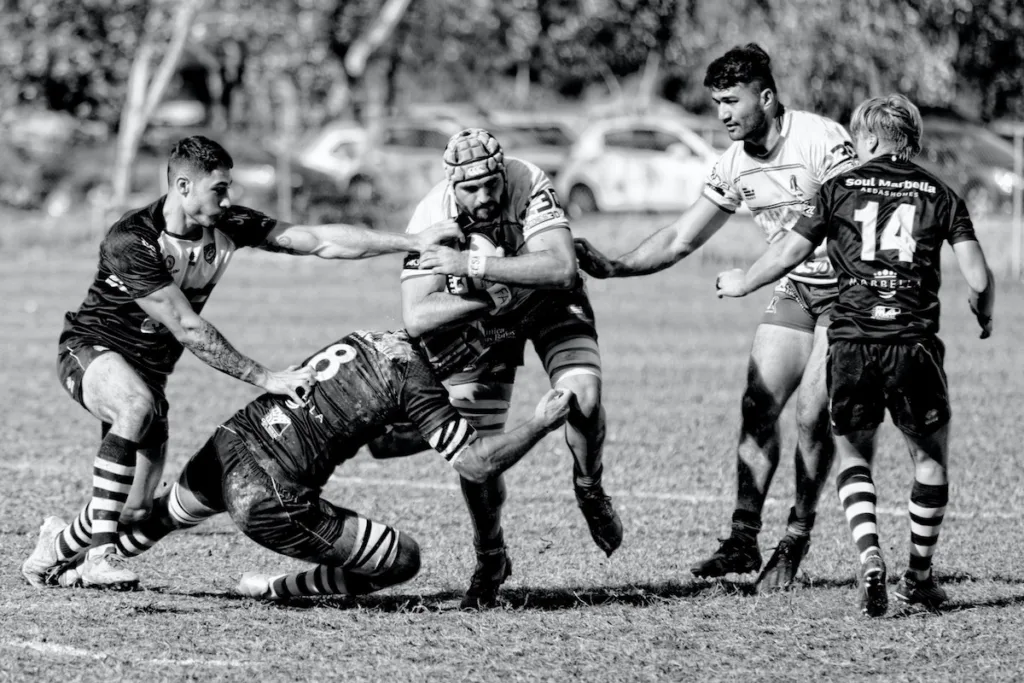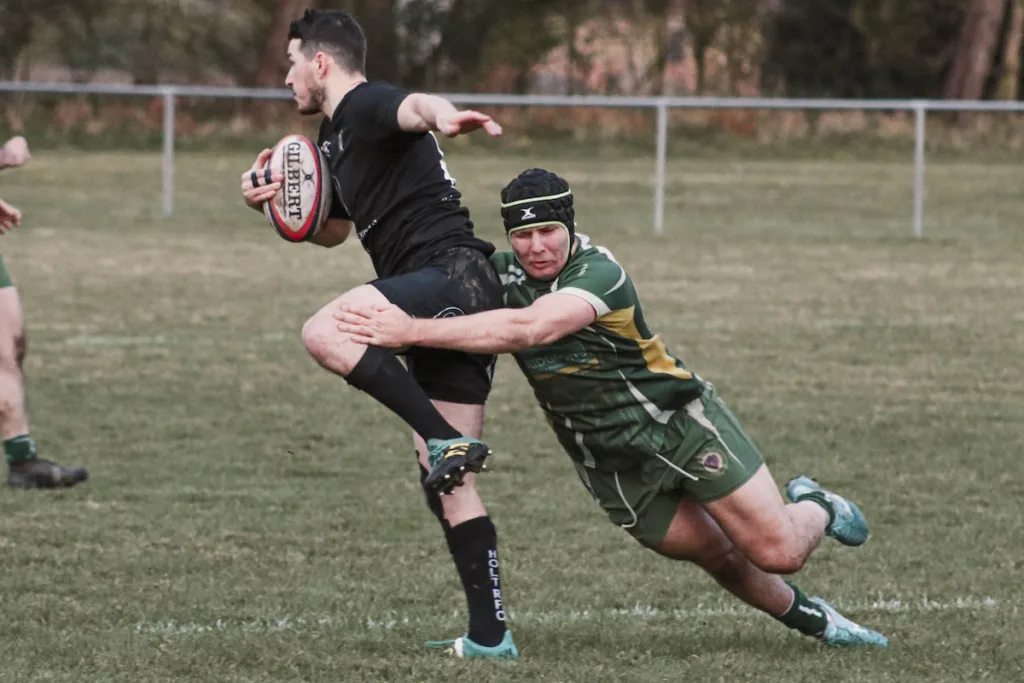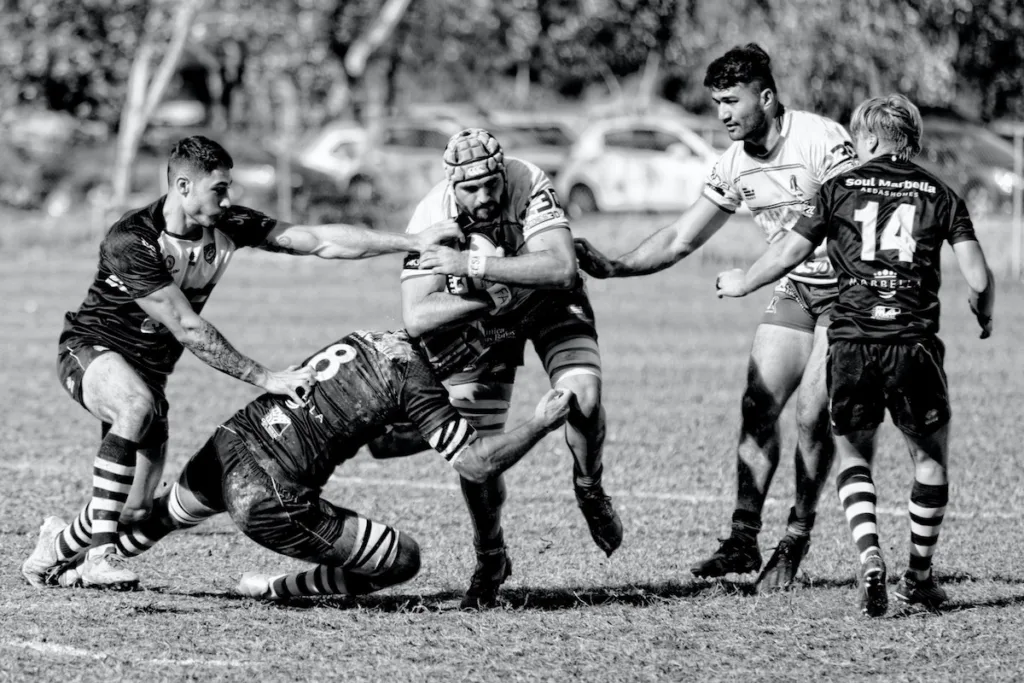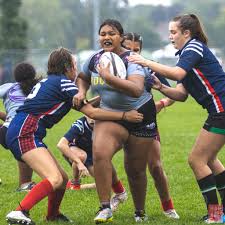In rugby union, a flanker is a position in the forwards. Flankers play on either side of the scrum and their main roles are to secure the ball in the rucks and mauls and to disrupt the opposition’s ball carriers. They also have responsibilities in defence and can provide support in attack. The two flanker positions are the blindside flanker and the openside flanker.
What does a flanker do in the scrum
In a rugby union scrum, the flankers are positioned on the sides of the scrum, outside the locks. Their primary role is to protect the ball and contest for possession in the scrum by trying to push their opponents backwards and win the ball for their team. They also have to be ready to support their own scrum-half in retrieving the ball if it comes out the back of the scrum. Additionally, the flankers have to maintain the stability of the scrum and keep it from collapsing.
What does a flanker do in attack
In attack, the flankers in rugby union play an important role in creating and taking opportunities for their team. Some of the key responsibilities of the flankers in attack include:
- Supporting the ball carrier: They support their teammates by providing options for offloading the ball or by providing cover in case the ball carrier is tackled.
- Carrying the ball: They can also carry the ball themselves, using their speed and power to break through the opposition’s defensive line.
- Lineout jumping: They may also be involved in the lineout, where their height and jumping ability can give them an advantage in winning possession of the ball.
- Creating space: The flankers can help create space for their team by making decoy runs, attracting defenders and freeing up space for other players to attack.
Overall, the flankers play a crucial role in rugby union, providing support and versatility both in defence and attack.

What does a flanker do in defence
In defence, the flankers in rugby union play a crucial role in helping their team stop the opposition from scoring. Some of the key responsibilities of the flankers in defence include:
- Tackling: They make tackles on opposition ball carriers to stop them from making ground and to turnover the ball.
- Ruck and maul defence: They defend the rucks and mauls by contesting for the ball and trying to prevent the opposition from making ground.
- Rush defence: They take part in the team’s rush defence by getting off the line quickly to shut down the opposition’s attacking options.
- Cover defence: They provide cover defence by being ready to defend any breaks in the line and to stop any opposition players who have broken through.
- Line speed: They help maintain line speed by getting up quickly after making tackles and getting ready for the next phase of play.
Overall, the flankers play a crucial role in rugby union defence, providing crucial support to the rest of the team and helping to stop the opposition from scoring.

What’s the difference between an openside and blindside flanker
In rugby union, the openside and blindside flankers are two positions in the forward pack. They have different roles and responsibilities within the team, and they are referred to as such based on the location of the scrum.
- Openside flanker: The openside flanker is positioned on the side of the scrum that has more space, and is therefore referred to as the “open” side. This player is usually smaller, faster and more agile, and is expected to be involved in the breakdown and turnovers. They are also responsible for securing the ball in the rucks and mauls.
- Blindside flanker: The blindside flanker is positioned on the side of the scrum that is up against the touchline, and is therefore referred to as the “blind” side. This player is usually bigger and stronger
The main differences between the two positions are:
- Side of the scrum: The openside flanker lines up on the same side as the scrum-half, while the blindside flanker lines up on the opposite side.
- Rucking responsibilities: The openside flanker is usually the primary player responsible for securing the ball in the rucks, while the blindside flanker has more defensive responsibilities.
- Ball carrying: The openside flanker is generally more attacking-minded and is more likely to carry the ball into contact, while the blindside flanker is more of a support player.
- Tackle-counter: The openside flanker is more often the player that makes the tackle-counter and is the first to arrive at the breakdown.
- Defence: The blindside flanker is typically more involved in defence and is responsible for making key tackles and providing cover defence.
While these are general tendencies, the exact responsibilities and skills required of each position can vary depending on the playing style and tactics of a particular team. Ultimately, both positions require players with a combination of physical and technical skills, as well as the ability to work effectively as part of a team.
What are the physical characteristics of a flanker
In rugby union, flankers are usually physically demanding positions, requiring a combination of strength, speed, agility, and endurance. Some of the key physical characteristics of a flanker include:
- Strength: Flankers need to be strong in order to contest for the ball in the scrums, rucks, and mauls, and also to make tackles on opposition players.
- Speed: Flankers need to be fast in order to get to the breakdown quickly and secure the ball, and also to cover the field and make tackles.
- Agility: Flankers need to be agile in order to evade tackles and make offloads in tight spaces, and also to manoeuvre around the opposition in defence.
- Endurance: Flankers need to have good endurance in order to play a high-tempo game, making tackles, contesting for the ball, and supporting their team in both attack and defence.
- Height: While height is not a requirement, taller players can be an advantage in the lineout, where they can use their jumping ability to win possession of the ball.
It is important to note that these physical characteristics can vary depending on the player and the style of play, and that a good flanker needs to have a well-rounded skillset and a good understanding of the game.

Well respected female flankers
There are many talented female rugby players who have made a significant impact as flankers. Here are some of the well-respected female flankers in the sport:
- Michaela Staniford (England): Staniford was an influential player for England during the 2000s and helped the team win several Six Nations titles.
- Sarah Goss (New Zealand): Goss has been a key player for the New Zealand women’s team, the Black Ferns, and has won several World Cups with the team.
- Shona MacLaughlin (Scotland): MacLaughlin was a powerful and dynamic player for Scotland and was widely regarded as one of the best flankers in the world.
- Cherry Healey (Australia): Healey was a dominant player for the Australian women’s team, the Wallaroos, and was known for her physicality and relentless work rate.
- Lucy Mackenzie (Wales): Mackenzie was a key player for Wales and was known for her strong ball-carrying ability and tireless work rate.
These are just a few of the many talented female flankers who have made a significant impact on the sport and who are widely respected by players, fans, and coaches alike.
Irish female flankers
There have been several talented female flankers who have represented Ireland in rugby union. Here are some of the notable Irish female flankers:
- Claire Molloy: Molloy has been a standout player for Ireland for many years and has captained the team on multiple occasions.
- Ciara Griffin: Griffin is a dynamic player who has made a significant impact for Ireland both in the loose and in the scrum.
- Ashleigh Baxter: Baxter is a powerful and physical player who has been a key member of the Ireland team for many years.
- Heather O’Brien: O’Brien is a versatile player who has made a significant impact for Ireland both in the loose and in the lineout.
- Chloe Pearse: Pearse is a talented player who has represented Ireland at both 7s and 15s, and is known for her speed and agility on the field.
These are just a few of the many talented Irish female flankers who have made a significant impact on the sport and who continue to represent Ireland with distinction.
How can I become a better flanker
Becoming a better flanker in rugby union requires a combination of physical attributes, technical skills, and tactical knowledge. Here are some tips to help you improve as a flanker:
- Physical conditioning: Improve your strength, speed, agility, and endurance through regular weight training and cardio workouts. This will help you perform at your best during matches.
- Technical skills: Focus on improving your tackle technique, ball-carrying ability, and breakdown skills. Practise these skills regularly, both in training and in games.
- Tactical knowledge: Study the game and understand the role of a flanker in both attack and defence. Know when to contest the breakdown, when to support your teammates, and when to make tackles.
- Game awareness: Develop a good understanding of the game and be aware of what is happening around you. Know when to support your teammates and when to take control of the ball.
- Versatility: Work on becoming a well-rounded player who can play both as an openside and blindside flanker, and be comfortable in both roles.
- Teamwork: Flankers play an important role in supporting their team, both in attack and defence. Foster good relationships with your teammates and work together as a unit.
Remember that improvement takes time and dedication. Be patient, continue to work hard, and seek out opportunities to learn and grow as a player.
